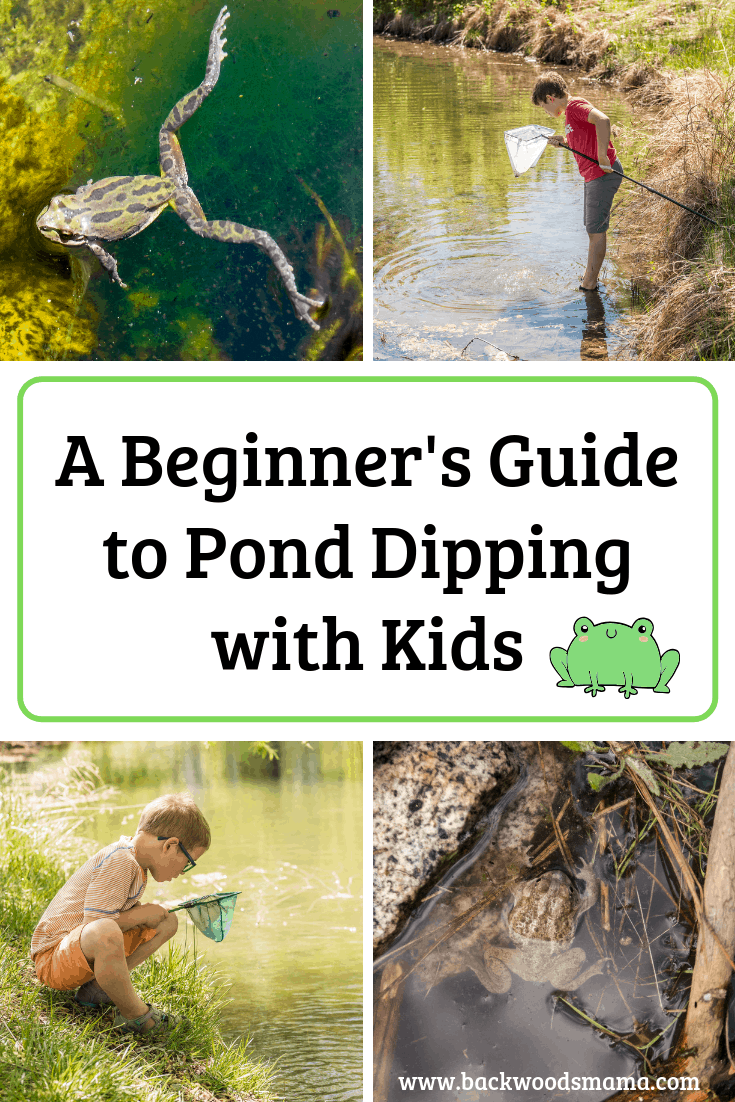×

Why We Need to Be Wild: Book Review and Reflection
“It’s a fox!” Not a live fox, but a furry orange lump lying on the side of the highway, eagerly (and illegally) rescued from its irreverent roadside...

At first glance, a pond might seem quiet and ordinary, but beneath its tranquil surface lies a vibrant, hidden world brimming with fascinating creatures! Pond dipping is a fun, interactive activity that sparks children’s curiosity and nurtures a lifelong love for nature. It’s wonderfully easy and accessible—your child just needs a simple net or a couple of buckets to transform into a nature detective, discovering amazing aquatic wildlife right in your local pond.
This post may contain affiliate links. As an Amazon Associate, I earn from qualifying purchases. This means I may earn a small commission if you click through and make a purchase, at no additional cost to you. Thank you for supporting this blog!
Post Updated: May 2025
The best time to go pond dipping is from May to August, when ponds are bursting with life. That said, there’s no wrong time to explore a pond! Spring and fall can also offer exciting discoveries. Try visiting the same pond throughout the seasons to observe how it changes week by week.
You don’t need much to get started:
Tip: Small nets are great for little hands, while older kids may enjoy experimenting with larger ones. Avoid bug-catching nets—their holes are too large for pond critters.
No net? No problem. Two containers work just fine for scooping and observing.

A pond is a small, still, shallow body of water. It may be natural or human-made. Choose one with easy access and shallow edges for safe dipping. Set up your gear close to the water’s edge.
Important: Be respectful of private property and sensitive nature areas.
Staying near the edge (and in the shade if it’s a hot day), fill your tray or bucket about halfway with pond water. This is where your child will place their finds for observation.

Swish your net in a circular or figure-eight motion near pond plants. Many creatures like to hide in the vegetation, so those spots are full of life!
Carefully lift the net out of the water and gently turn it inside out over your tray to release your catch. Let the water settle.

Take a close look at what you found! Use a magnifying glass if you have one. Some creatures are incredibly tiny.
Pond minibeasts don’t thrive in buckets for long. On warm days, we limit observation time to 10–15 minutes. Gently tip the water and creatures back into the pond when you’re done.
Reminder: It’s illegal to remove wild creatures from their habitat. Always return them before leaving.

Ponds are home to all kinds of creatures, from the visible to the nearly invisible. I like to call these tiny critters “pond minibeasts.”
They can be:
There’s a whole zoo of weird and wonderful wildlife beneath the surface! Use the free Pond Minibeasts Identification Sheets to identify your discoveries.
These pages are excerpts from My Spring Nature Journal.
Pond Minibeasts Identification Sheets – Download Here!

Curious about the tiny creatures you’ve scooped up while pond dipping? Download this SPRING POND INVERTEBRATES IDENTIFICATION sheets (2 pages) to identify your aquatic finds and spark a love for freshwater ecosystems.

Curious about the tiny creatures you’ve scooped up while pond dipping? Download this POND MINIBEASTS IDENTIFICATION guide (3 pages) to identify your aquatic finds and spark a love for freshwater ecosystems.
Always supervise children around water.
Young children should pond dip from their knees or bellies to prevent falls.
Don’t drink pond water. Make sure to wash hands thoroughly after exploring, especially before eating.
Clean nets and containers before visiting another pond to avoid spreading bacteria or invasive species. Use clean water and let them air dry, or disinfect with a mild bleach solution if pond-hopping the same day.



0 Comments